Before we look at this review of the RXF36 and TTXAir shock, a little history lesson: Öhlins’ performance pedigree dates all the way back to 1976 when the company was founded by Kenth Ohlin. Originally set up in his father’s engineering workshop, Kenth started building exhaust pipes, engines and shock absorbers. It wasn’t until the early 80’s that he dropped the other areas and focused solely on suspension products, making their first mountain bike fork in 1984.
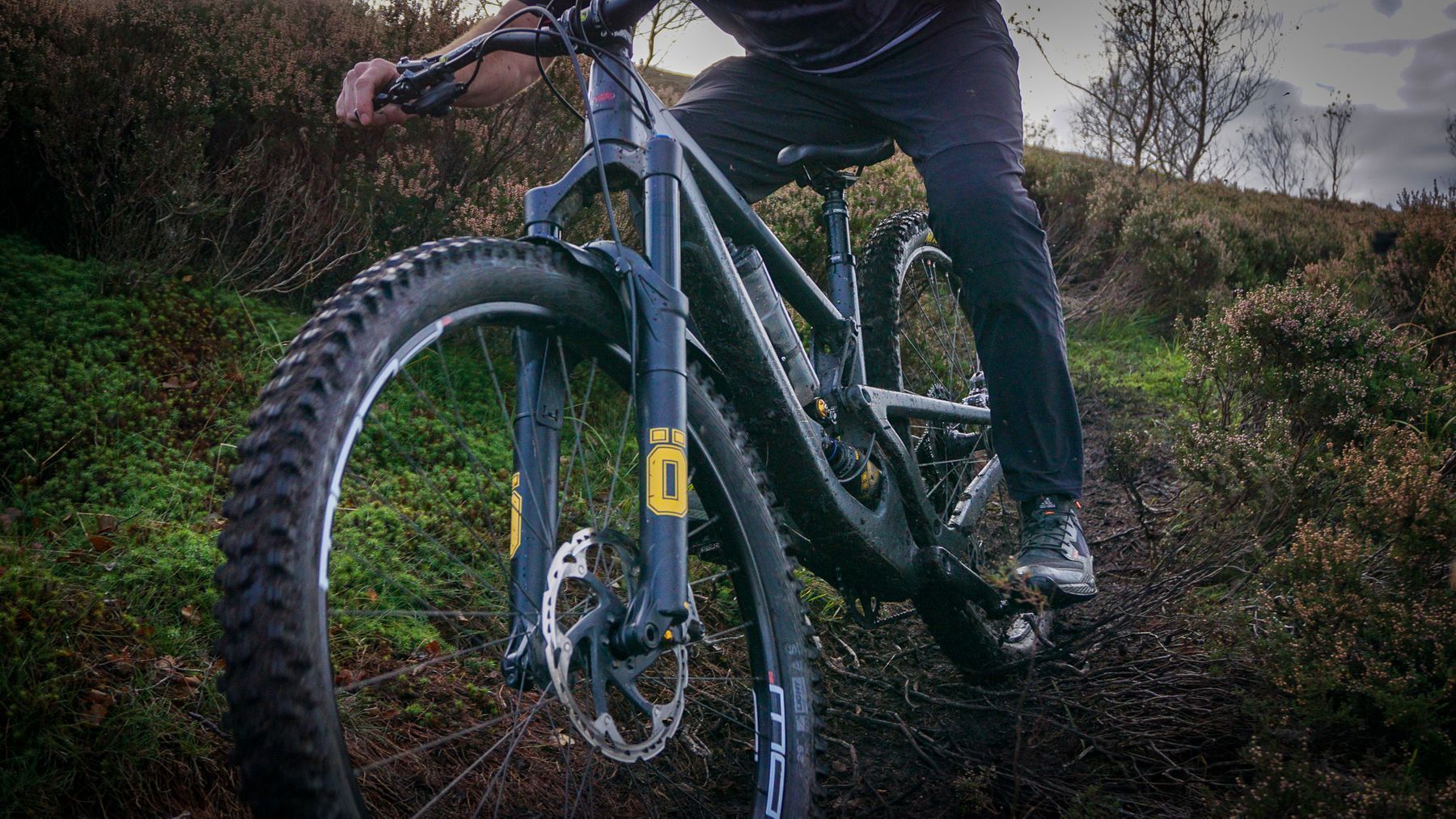
Since that time Öhlins has gone on to develop suspension systems for all manner of racing, from motocross to superbikes, Formula 1 to rally cars, and wracked up podiums and silverware in all different sports and categories (not least of which under a seriously fast Frenchman named Loic).
In the bike sector Öhlins offers both single and dual crown forks, alongside air and coil shocks to cater for all different niches from trail to full blown World Cup downhill. We’ve spent the last couple of months testing the RXF36 M.2 air fork and the TTXAir rear shock, both aimed at the aggressive trail and enduro market sectors.
The Fork:
The RXF36 M.2 is available in both 27.5” and 29” variants along with air or coil, with travel ranging from 150mm to 170mm or 180mm depending on wheel size. We’ve had a 29” 160mm air fork on test which has been plugged into the front of a Santa Cruz Megatower for the last couple of months.
Latest Singletrack Merch
Buying and wearing our sustainable merch is another great way to support Singletrack
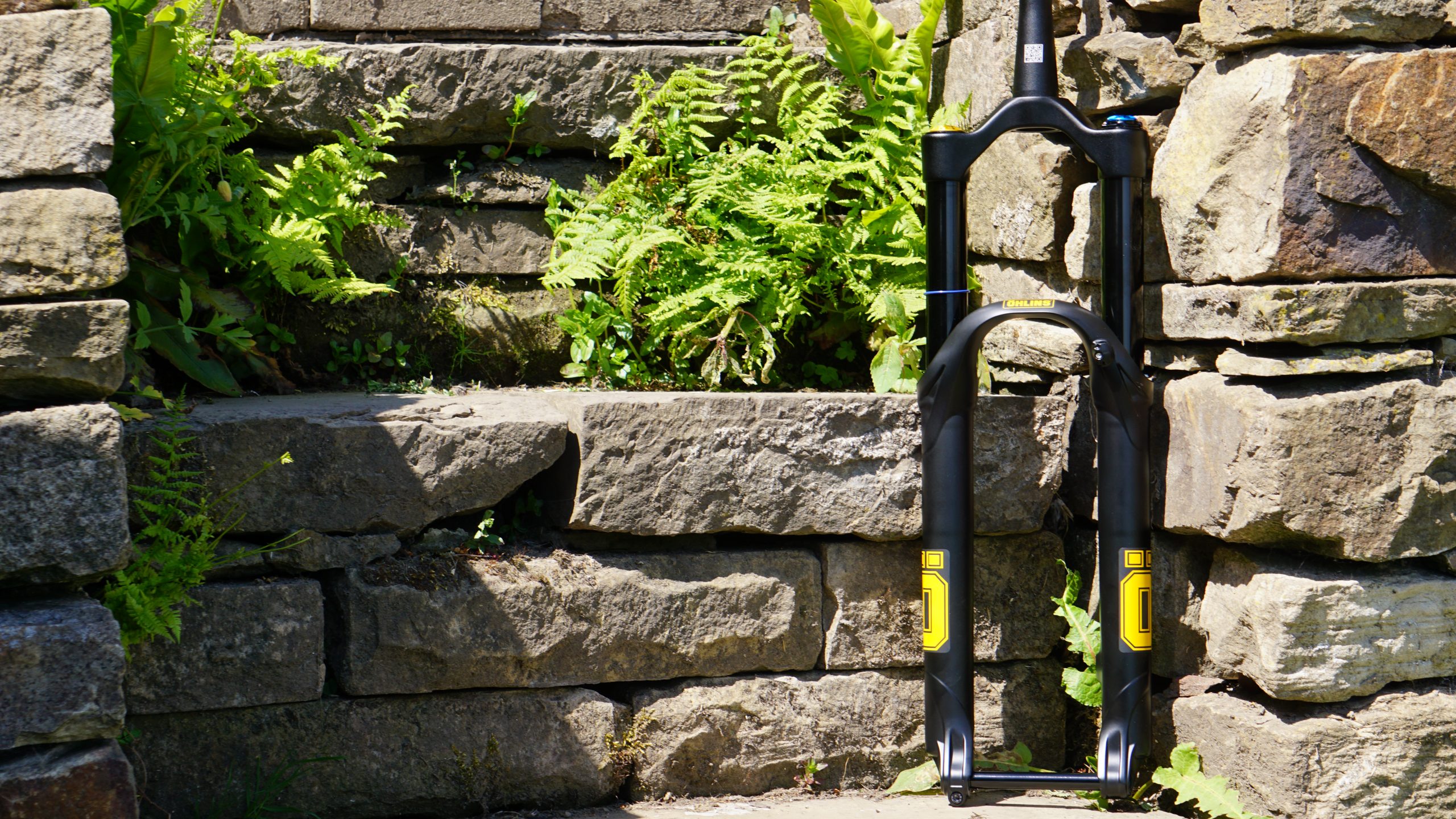
As the names suggest, the fork is designed around a set of chunky black 36mm stanchions that are bonded into a matching black CSU unit. While it may look similar to older models, the crown on the RXF36 M.2 has been updated for added stiffness. Öhlins has also removed the integrated crown race that featured on previous models allowing buyers to use any crown race they choose.
Sitting on top of the right hand leg you’ll find a super bling gold air valve. This leg houses the RXF36’s air spring and like most forks on the market uses a positive and negative air chamber which self equalise through a transfer port. At the bottom of the leg you’ll find another air valve which is for the Ramp Chamber.
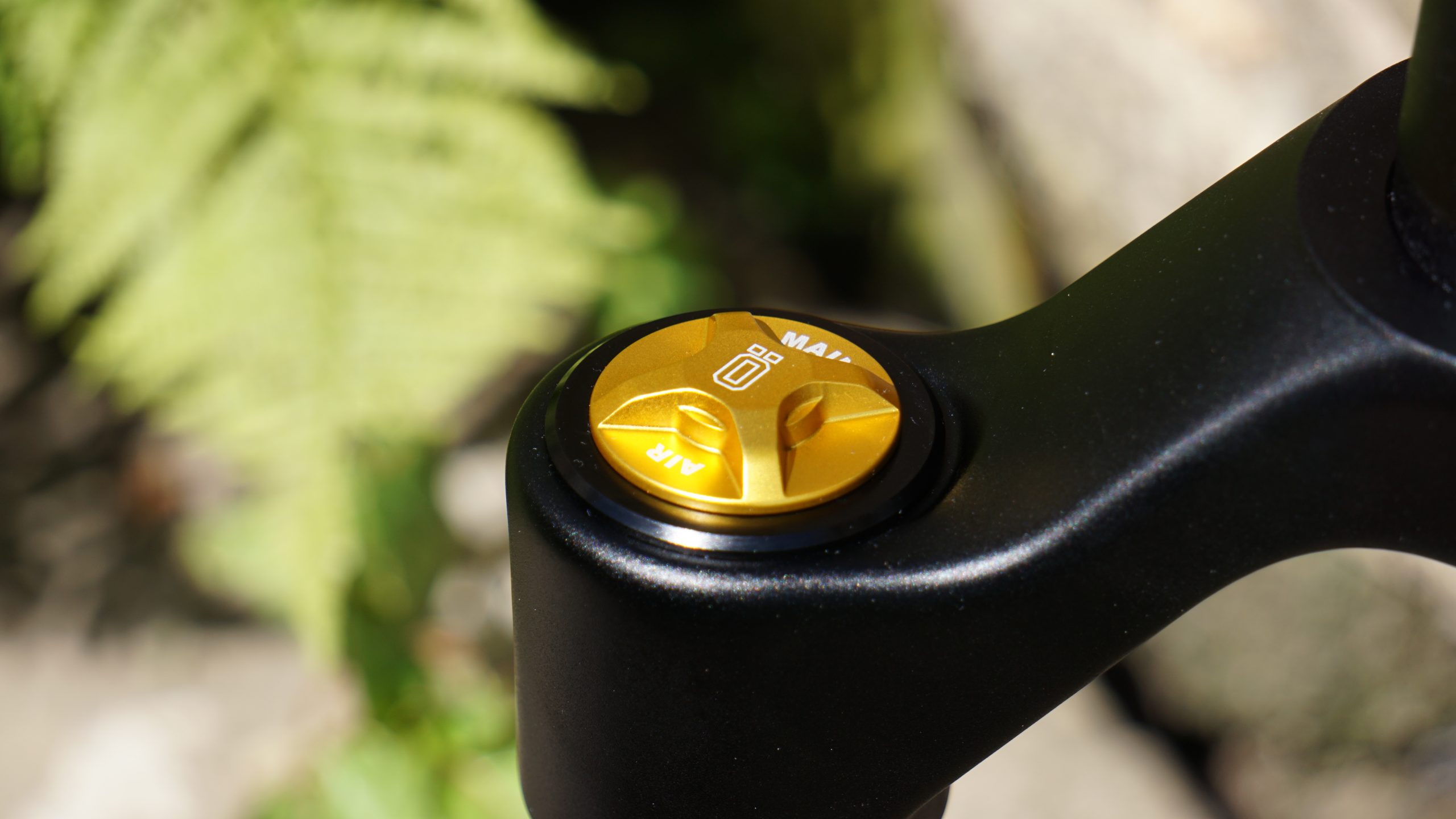
Unlike other manufacturers, Öhlins forgoes the use of tokens to alter the air volume and spring rate and instead uses the pressure of the Ramp Chamber to add progression into the end of the stroke. The Öhlins air spring is also cartridge based meaning that you can swap between air and coil should you wish without issue.
Over on the left is a 3 position high speed compression adjust lever, along with low speed compression adjustment. Underneath those compression adjusters sits the RXF36’s damper – the TTX18. The TTX18 is based on the damper from the DH38 air fork, but has been reworked specifically for enduro and trail riding. The damper uses a twin tube system (hence the TT moniker), so one inside another, to provide a circulation of oil from one side of the piston to the other and ensure no cavitation. The 18 in the title refers to the size of the piston (18mm) which Öhlins says has been optimised for small bump sensitivity.
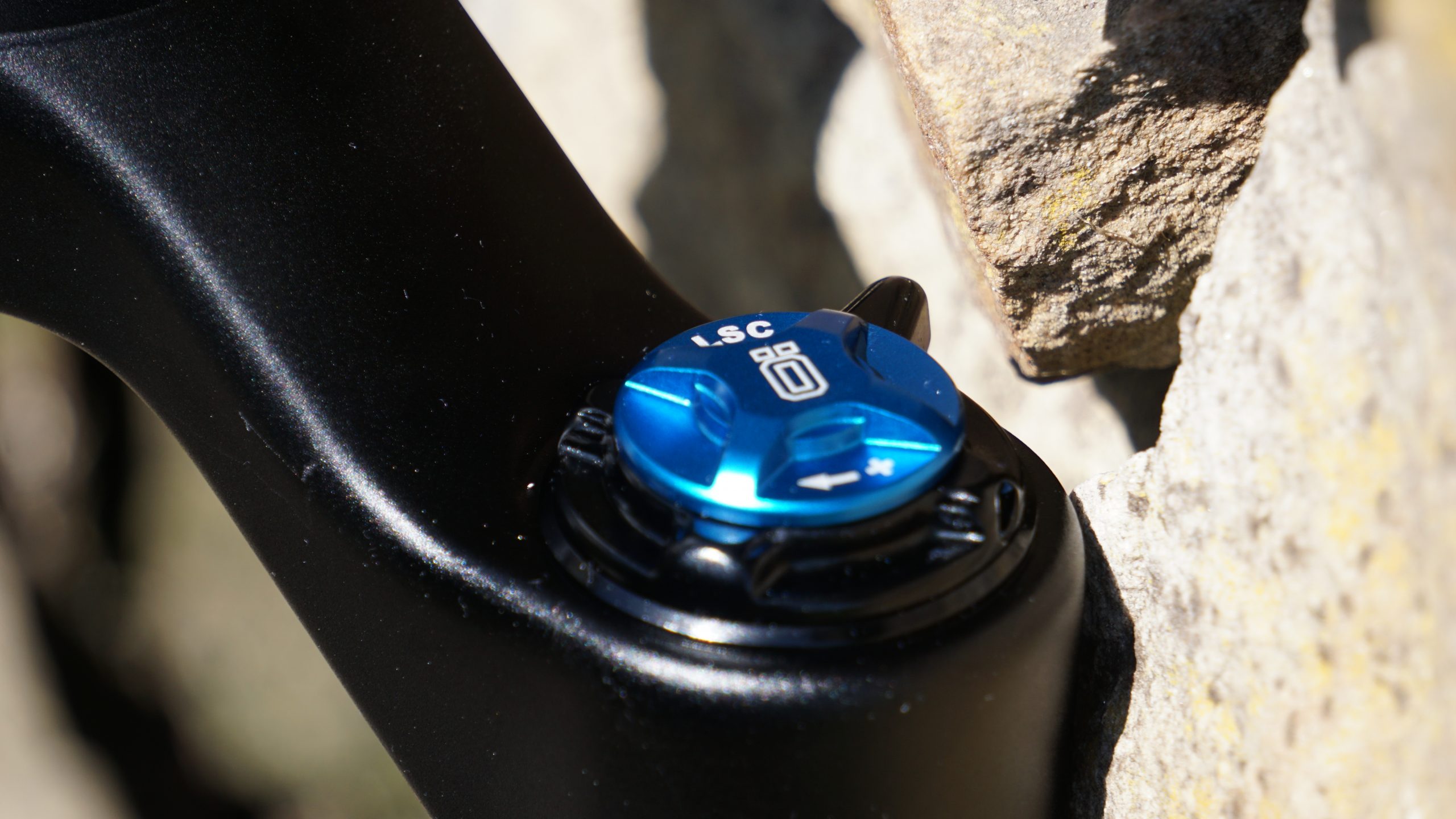
To keep things even more supple and stiction free, Öhlins also uses blue SKF seals to ensure everything runs smoothly. At the opposite end of the fork the axle also utilises a pinch bolt to keep things secure and running true, and there’s room for a whopping 29 x 2.8 tyre.
The Shock:
Öhlins are well known, and respected for their coil rear shocks, with them performing at the highest level. Using technology front he successful TTX M2 Coil, the TTXAir was designed to give the same performance, but in a lighter, trail / enduro bike friendly package.
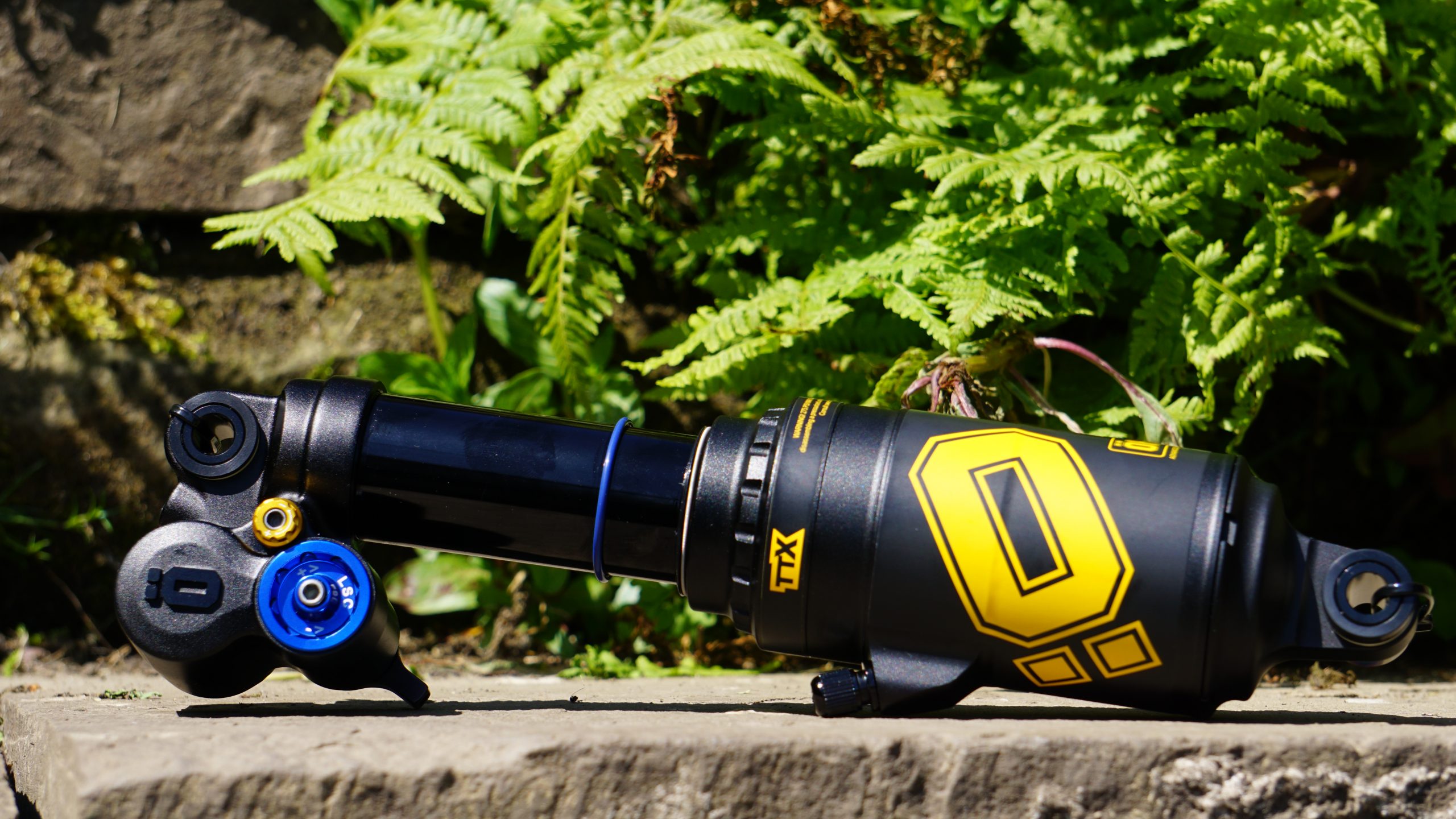
By using the TTX damping system from the coil shock, and combining it with a brand new air spring design, Öhlins claims to have made improvements to both performance and robustness over previous air shocks.
The TTXAir offers plenty of scope for adjustment with independent low speed adjustment, rebound and a three position high speed adjuster. The third position of which not only firms up the high speed compression but the low as well making it more of a climb mode.
Available in metric 190/210/230mm length the TTXAir is available with either standard or Trunnion mount. Öhlins also supply a range of volume reducers for further tuning, while our test sample came with the 20000mm³ reducer pre-installed.
Set Up:
Initial set up for the fork and shock was nice and simple. The Öhlins website has a handy feature where you can enter your bike model, your weight and preferred sag, and the site will show you which products are suitable and recommended settings.
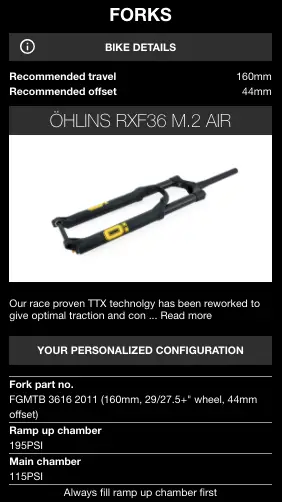
Based on this, I set the fork up with 195psi in the ramp chamber and 115 psi in the mai chamber. It also reminds you to fill the ramp chamber first, After this it was just a case of setting low speed compression and rebound to suit.
Setting the shock was a case of adding pressure until I reached the 17mm of sag suggested by Öhlins, and then again adjusting rebound and low speed to suit.
The Ride – Ohlins RXF36 Fork:
The fork and shock were both fitted to a Santa Cruz Megatower, to match their enduro intentions, and have been ridden multiple times per week for the past couple of months. While I’ve ridden some pretty varied terrain, they’ve spent the majority of their time riding a mix of steep off-piste hand cuts, ghetto dh tracks and the odd rocky trail.
After an initial ride I tweaked the air pressures to suit the trails by removing a coupleof psi in the main chamber, and adding a couple of psi in the ramp chamber. I also backed off the low speed compression and speeded up the rebound a couple of clicks but since that point things have stayed the same.
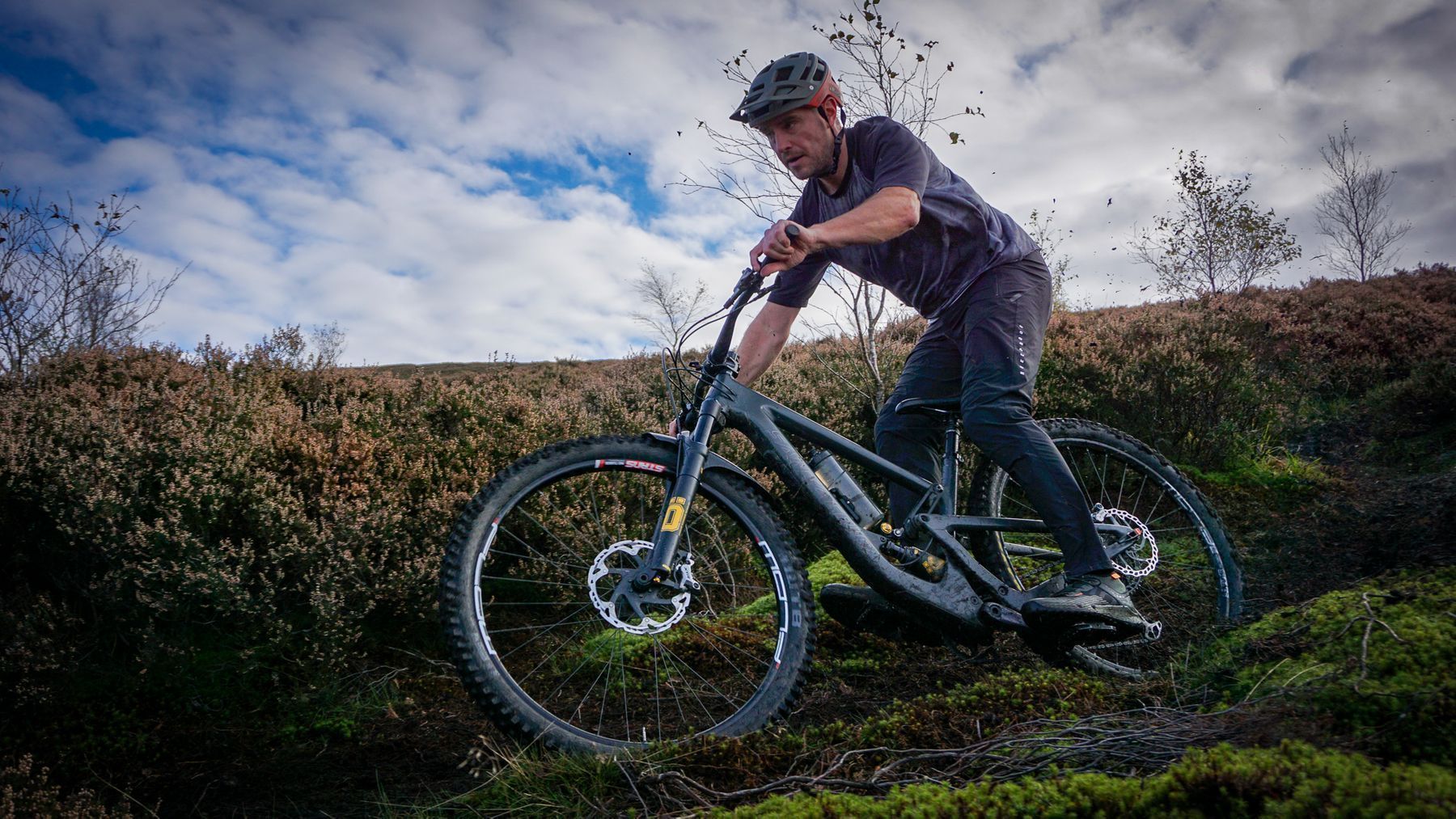
As an enduro / trail fork the RXF36 M.2 needs to go up as well as down and climbing is unremarkable in the best way possible. There’s no noticeable pedal bob from the fork, yet it retains a good amount of small bump sensitivity and tracks the ground well adding grip.
Once you get gravity on your side and speeds start increasing the RXF36 M.2 stays calm and composed. It’s really supple off the top and does a great job of soaking up smaller repeated trail noise, while still offering plenty of support for pushing into steep and greasy turns or smashing into rocky sections. It stays nicely in the mid stroke allowing you to weight the front tyre for grip, without diving, while still having plenty of travel in reserve.
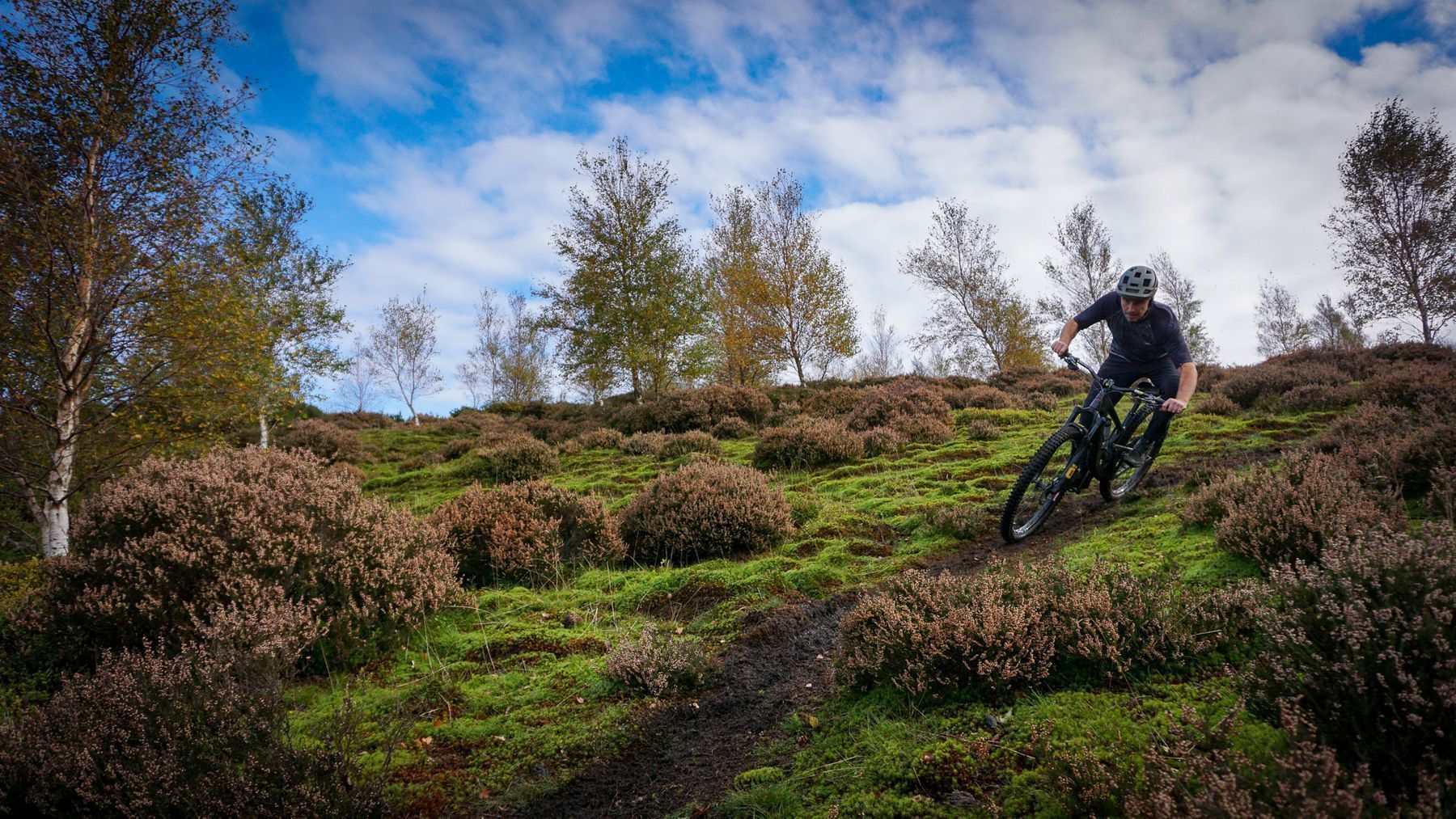
Charging into chunky trails the fork stays composed, holding a line well without deflection or flex, with plenty of mid stroke support keeping you sat up in the travel. And while you can certainly use all the travel available, the damper does a great job of controlling things and delivers it in a measured way with no harsh or unpredictable bottom outs.
The Ride – TTXAir Shock:
Before fitting the TTXAir I’d been running both air and coil shocks on the Megatower so had a good base to compare things. Even though the TTXAir uses a bottom bushing mount, compared to the other shocks bearing mount, one of the first things I noticed was that there’s a marked improvement in breakaway and small bump compliance over the stock air shock.
The TTXAir is really supple and does a great job of soaking up small bumps and adding grip when climbing, with no noticeable pedal bob, and during the test I never felt to use the climb switch. I did try, and it certainly firms things up, but the combination of the Megatowers kinematics and well damped shock meant I never needed it in a real world situation. Similarly, while I tried the additional high speed compression settings, I found the first position to suit the riding I was doing and give the optimum combination of support and sensitivity.
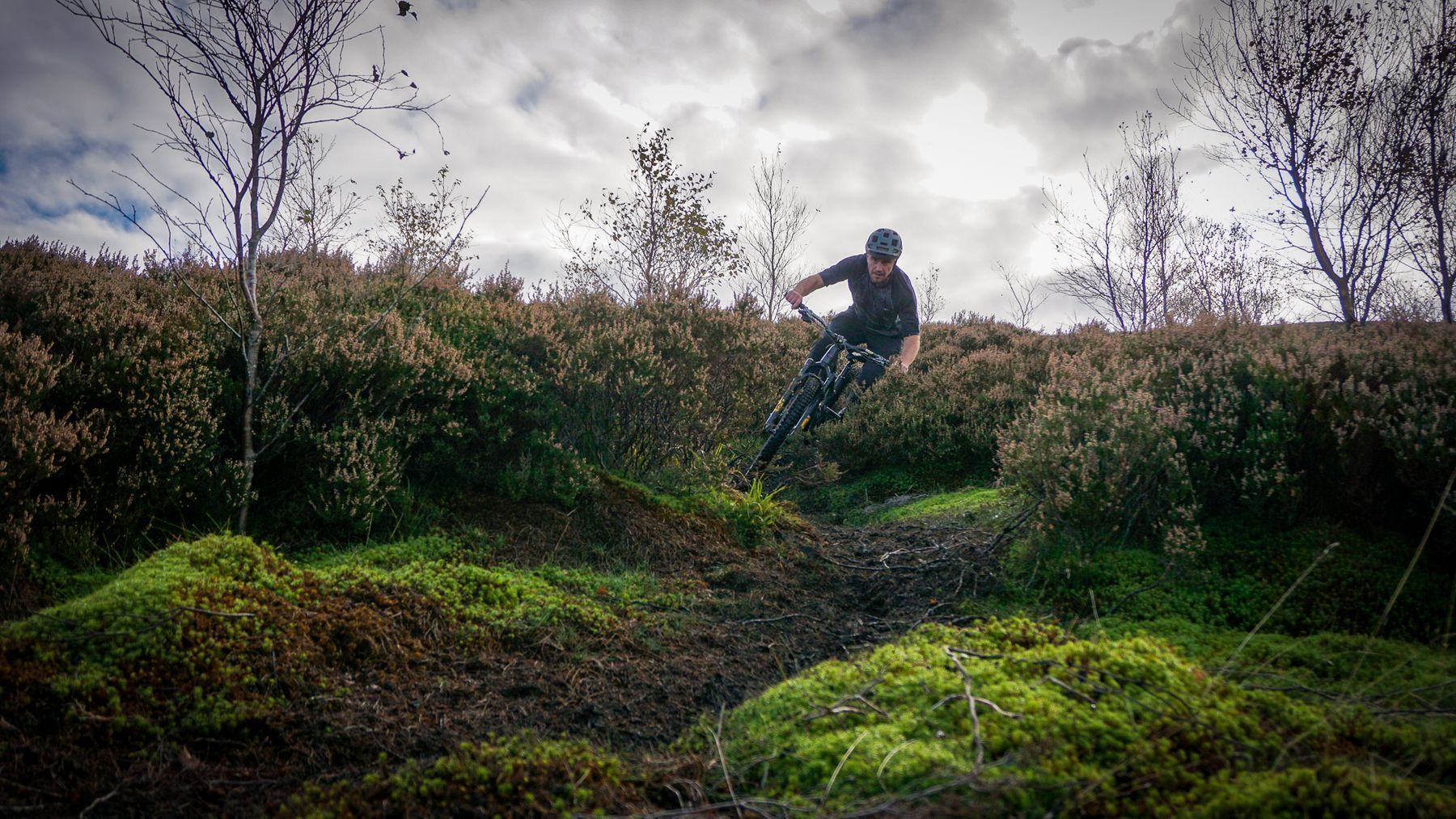
While climbing performance is certainly something to consider, the TTXAir is designed for ultimate performance when pointed down the trail and it certainly doesn’t disappoint. The suspension on the Megatower is certainly on the firmer end of the spectrum, and definitely feels better the more you push. The TTXAir changed that and added an element of sensitivity over the stock shock which in turn increased the small bump sensitivity, adding grip on off camber sections and slippy roots, while also smoothing out the ride over smaller trail chatter.
And while it’s really active and supple it still has plenty of support through the stroke, offering bags of grip in steep and fast turns, letting you push the rear into the dirt finding the edge of grip. That support is also noticeable in rocky sections with bigger repeated hits, staying composed without blowing through the travel and letting you load up the back to gap sections.
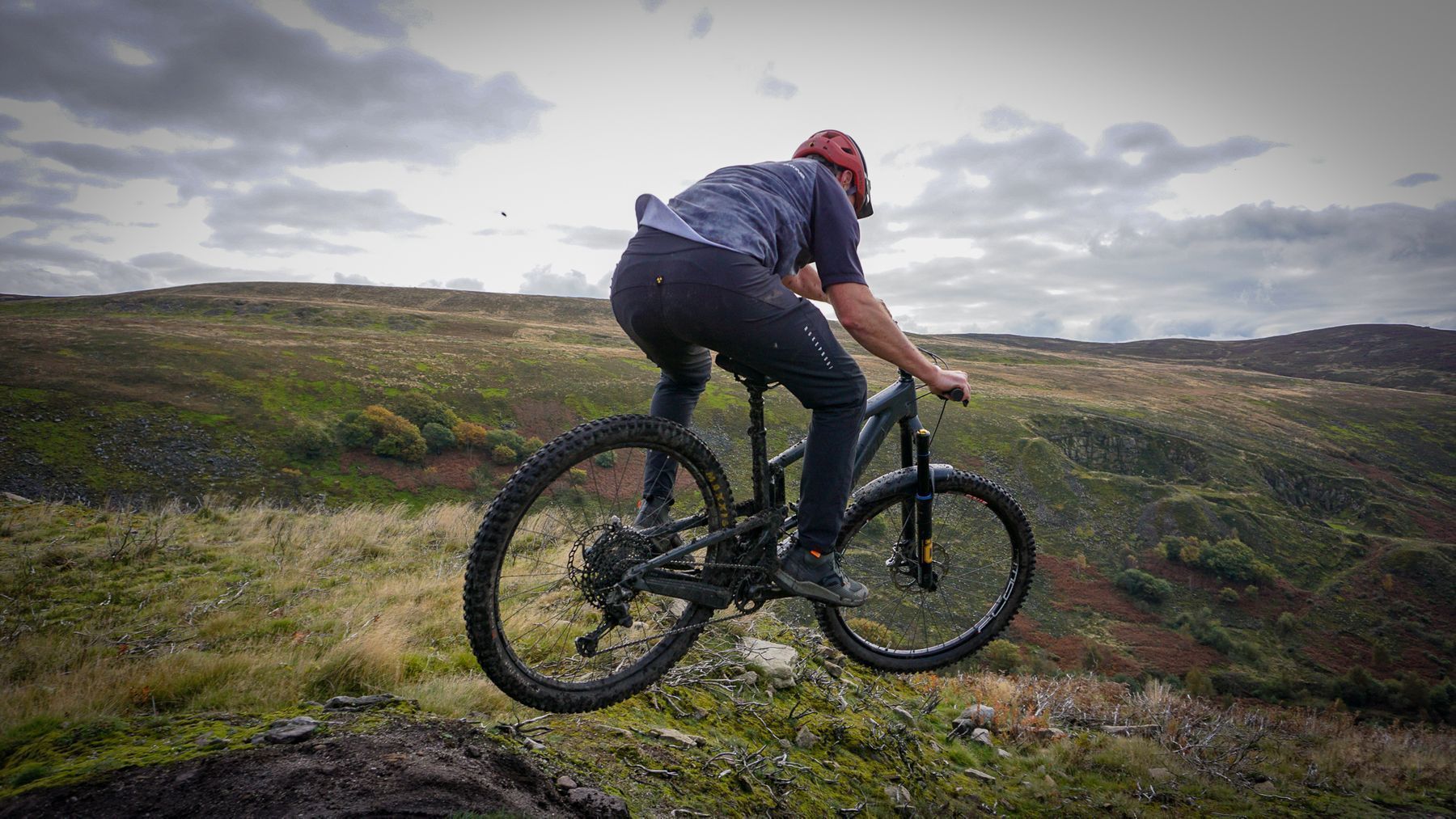
While most of the testing has been on natural and off-piste trails, there’s also been a few trips to local DH tracks where it’s been subjected to it’s fair share of reasonably sized drops and jumps and has dealt with everything it’s been given – whether overshooting a landing or landing a drop flat, the shock has shrugged it all off without issue.
Reliability:
Reliability on both the fork and shock has been second to none. Everything is still running nice and smooth with no knocks or wobbles, despite my best efforts to destroy them – which included a high speed fork to tree interface.

Overall:
I’ve been impressed by the performance of both the RXF36 M.2 and the TTXAir. The fork feels great and is fairly easy to set up, offers plenty of usable adjustment, and performs well whether that’s through adding grip in off camber sections, or managing big, repeated, rocky hits. It takes it all in its stride and doesn’t flinch.
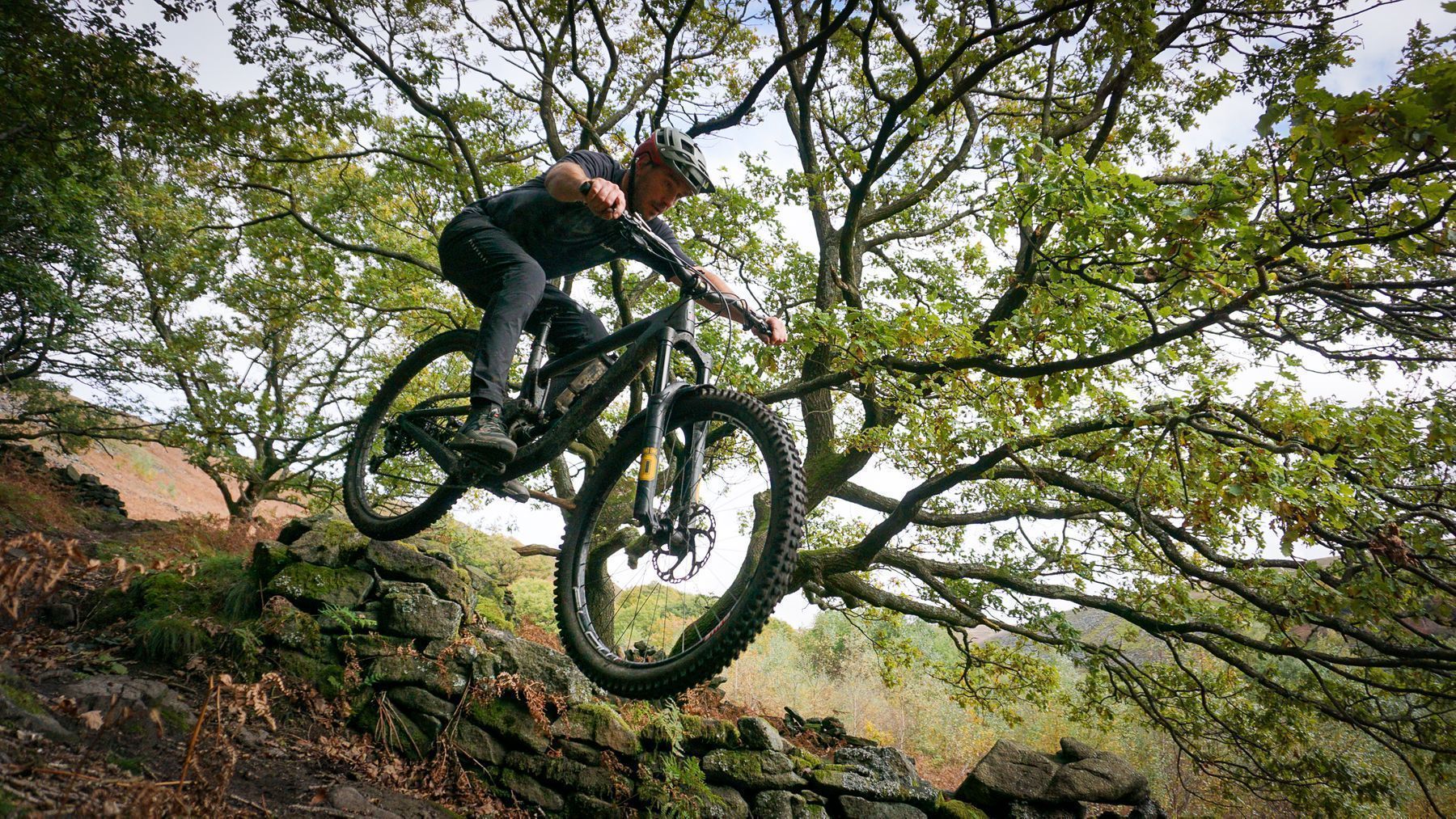
The shock is no different, and if anything, it impressed me even more with its performance. It was a definite improvement over the stock shock, adding plushness and small bump compliance and giving the back end an almost coil like feel. Big hit performance was just as good and it’s this performance that makes both the fork and shock viable alternatives to the usual suspects. For those wanting something a little different, without sacrificing performance or reliability then the RXF36 M.2 and TTXAir should be top of your list.
More details can be found on Ohlins’ web page.




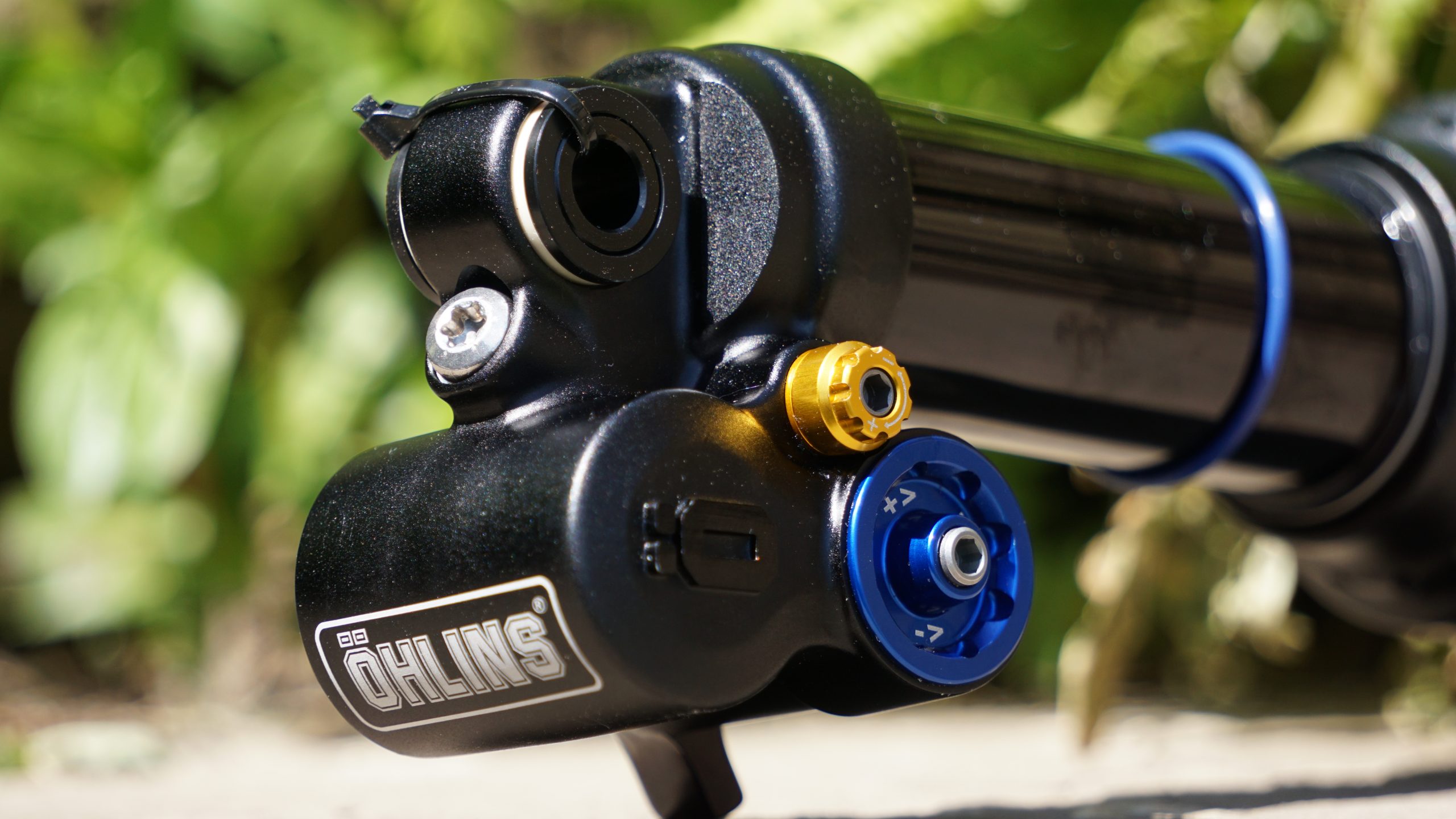


It would be interesting to read your thoughts on how the 36 compares to a Fox 36/38, and Lyrik/Zeb.
Likewise the shock compared to an X2 and SuperDeluxe.
poor tree